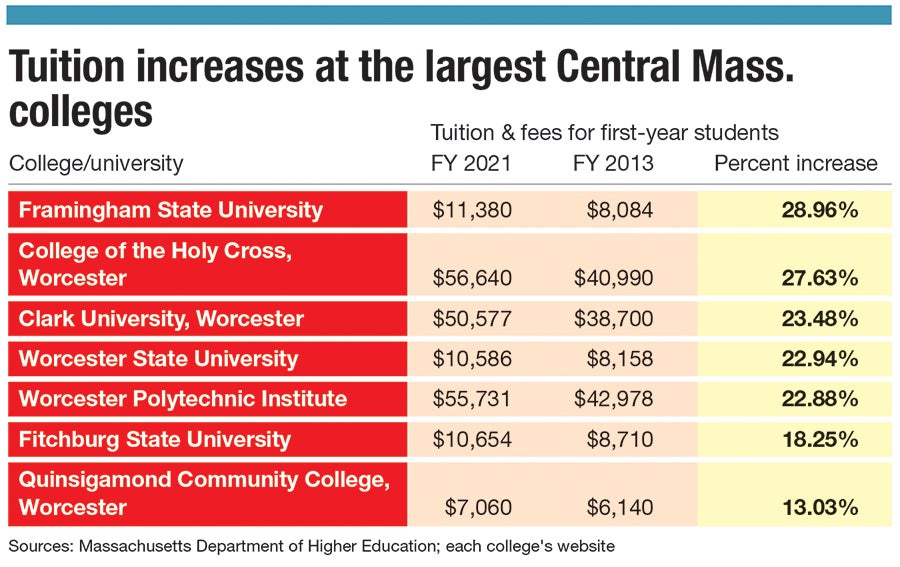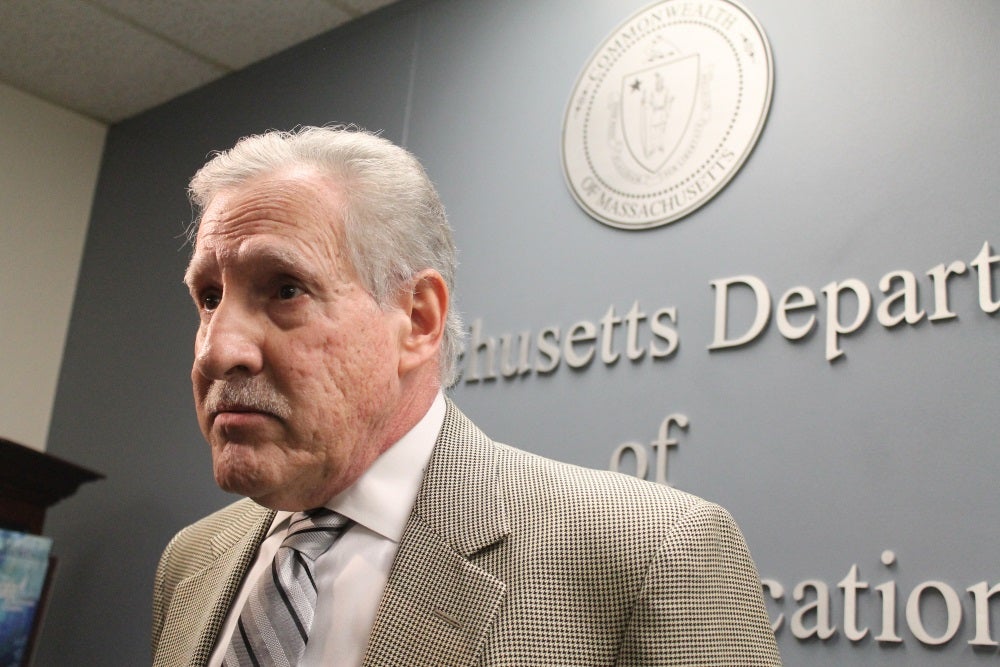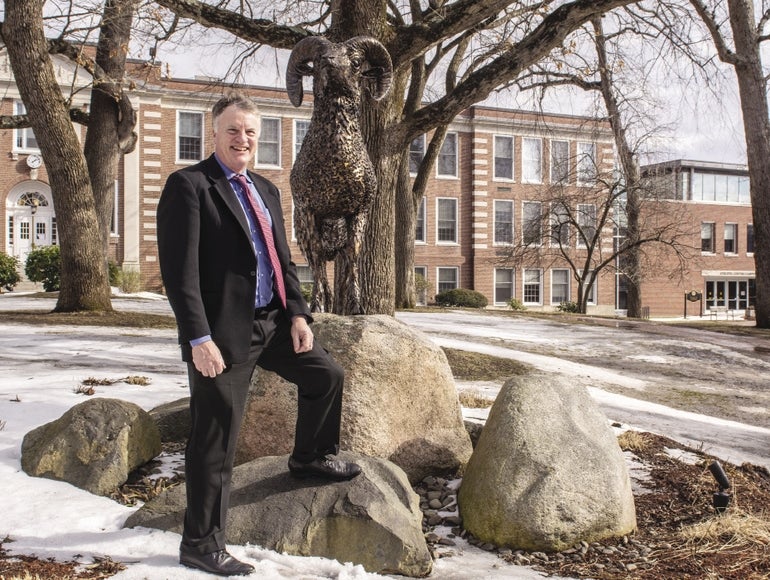Two years of pandemic-related enrollment declines are sure to have considerable impacts on colleges, but educators say the problem could be more long-term.
Get Instant Access to This Article
Subscribe to Worcester Business Journal and get immediate access to all of our subscriber-only content and much more.
- Critical Central Massachusetts business news updated daily.
- Immediate access to all subscriber-only content on our website.
- Bi-weekly print or digital editions of our award-winning publication.
- Special bonus issues like the WBJ Book of Lists.
- Exclusive ticket prize draws for our in-person events.
Click here to purchase a paywall bypass link for this article.
From 2019 to 2020, the percent of Worcester’s Burncoat High School seniors applying to college fell from 93% to 50% as the coronavirus pandemic altered nearly every corner of education.
A year later, that figure has continued to fall to 40%, said Sharon McLaughlin, an education advisor at Massachusetts Education & Career Opportunities, Inc., who added she hopes to see some increase before the end of the year.
The pandemic caused an initial dive in college enrollment numbers, which have yet to plateau despite most schools’ return to in-person learning.
“Students are making a lot of different choices,” said McLaughlin, who works with high school juniors and seniors. “They’re not interested in college.”
Two years of pandemic-related enrollment declines are sure to have considerable impacts on colleges, but educators say the problem could be more long-term, as student attitudes toward the financial investment of higher education are shifting significantly.
“We have a long-term plan that shows us being a smaller institution than we were pre-pandemic,” said Dale Hamel, executive vice president of administration and finance at Framingham State University. “We’re hoping those are conservative assumptions, but I think they’re appropriate at this point.”

Shifting priorities
Affordability is the greatest barrier for students considering higher education, as it is the most common reason unenrolled students give for not attending college, according to a February report from Seattle-based data analyst firm Intelligent.
On average, tuition rates at state and community colleges excluding UMass have increased 25.3% since 2013, according to the Massachusetts Department of Higher Education.
On top of that, students were saddled with even greater financial responsibilities at home when the pandemic struck.
“We’ve seen a lot of kids that are now sort of the breadwinners in the family, so they’re not applying because parents have lost their job. They are working many hours while going to school to try and help support the family,” said Taryn Tomkins, the director of GEAR UP Worcester, a college awareness and readiness program for middle and high schoolers.
Roughly 9.6 million Americans lost their jobs because of the pandemic, according to the U.S. Bureau of Labor Statistics, which not only forced more students to work but created concerns over changed financial aid eligibility.
In response, a flurry of institutions froze tuition and fees in 2021, including Fitchburg, Framingham, and Worcester State universities, Quinsigamond Community College, and the University of Massachusetts system.
So far in 2022, Framingham State University is the only Central Massachusetts college to continue that freeze for a second year.
“With the tuition, I think there’s a number of factors. One of them … is that there’s fewer students continuing on into higher education,” said Hamel of Framingham State, which has the highest percentage of non-white students among Massachusetts state universities, according to the DHE.
Other public colleges in the area are planning to raise tuition and fees between 2% and 3% this year, said Hamel.
As college poses a massive expense, students are reconsidering the practicality of such an investment, especially when other online learning services come at a much cheaper price.
More than 85% of recent high school graduates use some type of alternative means, such as online certification or internships, to further their education, the Intelligent report showed.
Students “didn’t want to be paying all this money to just be going online for college,” said Tomkins. “Another trend we saw was more and more questions about certificate programs and paths that were not the traditional four-year bachelor’s, how could they get into a job with a certificate, and be earning money faster.”

Beyond finances, students face other challenges to enrolling and staying in college through graduation, said DHE Commissioner Carlos Santiago.
“Particularly for students of color and low-income students, the supports necessary to give them access to college, be retained in college, and ultimately graduate college are not there,” he said.
There is a growing need for assistance with food insecurity and homelessness among students, Santiago said, as well as mental health resources.
Dim financial forecasts
Financially, colleges are forecasting a slow and incomplete recovery.
“Even if [enrollment] does turn around, you have to remember we’ve got two small classes now. That’ll play itself out through the next four years,” said Hamel. “We have to get through that period, and then we kind of stabilize at a new enrollment level that’s higher than we are now but lower than what we were pre-pandemic.”
Framingham State restructured its debt twice to reduce costs over the next five years until its bonds are paid off.
“We essentially are buying ourselves time to the point where our debt declines significantly,” said Hamel.
Since March 2020, Framingham State has received a total of $27.3 million from a range of programs, including Higher Education Emergency Relief Fund, shuttered venue and small business funds, and monies from the American Rescue Plan Act, said Hamel. Its federal stimulus of $12 million has been spread over the three fiscal years since the pandemic, with $9.5 million dedicated to student financial aid, to cover deficits.
“The truth is that the funding that they've gotten is not permanent,” said Commissioner Santiago. “My concern is, I'd say two years from now, if enrollments don't really pick up, they're going to be hurting financially.
Board members at the DHE have created a strategic finance committee to understand how public institutions’ funding can be more predictable and regular, Santiago said.
While the research is not done yet, they hope to have recommendations for colleges and universities over those next two years.

